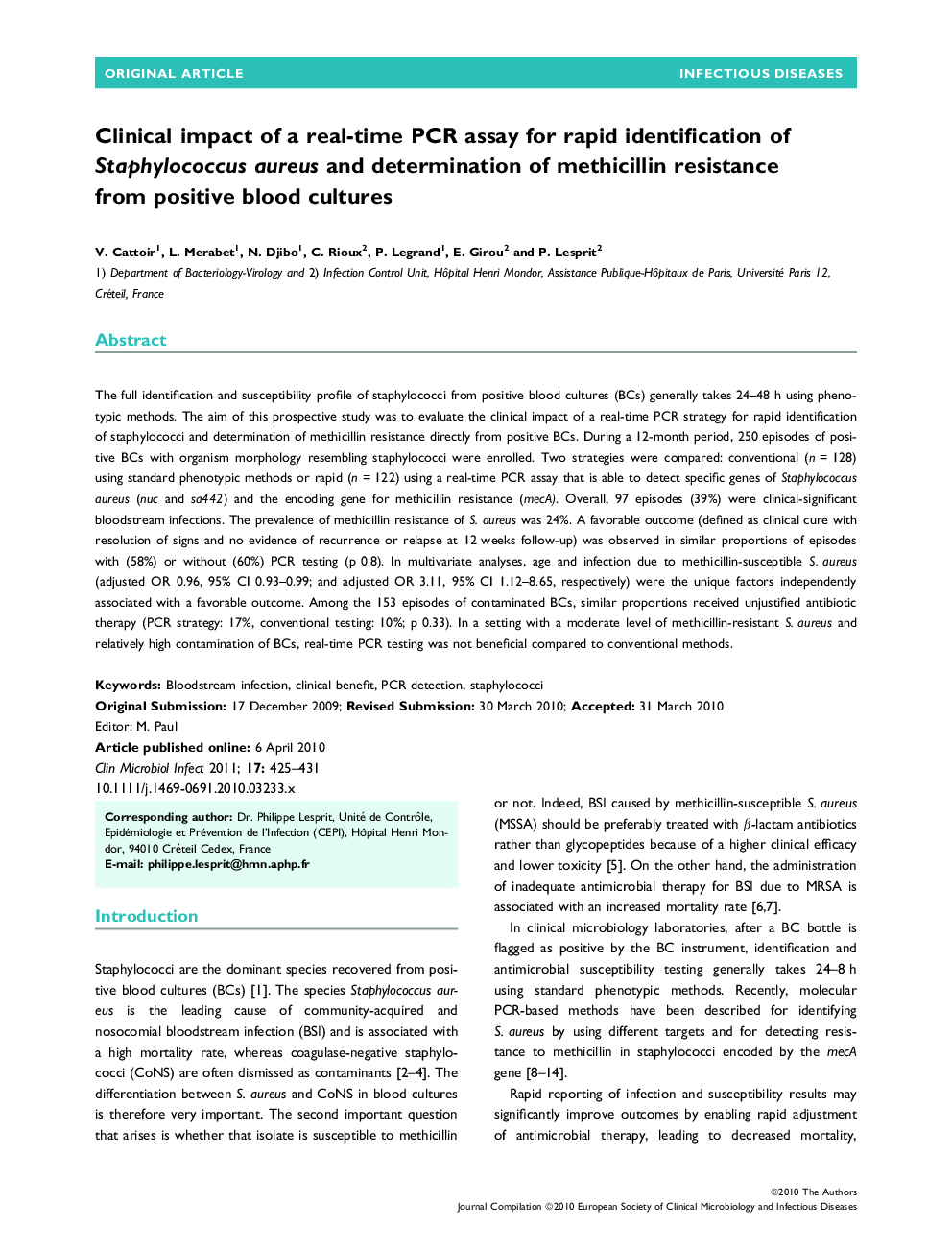| Article ID | Journal | Published Year | Pages | File Type |
|---|---|---|---|---|
| 3397539 | Clinical Microbiology and Infection | 2011 | 7 Pages |
The full identification and susceptibility profile of staphylococci from positive blood cultures (BCs) generally takes 24–48 h using phenotypic methods. The aim of this prospective study was to evaluate the clinical impact of a real-time PCR strategy for rapid identification of staphylococci and determination of methicillin resistance directly from positive BCs. During a 12-month period, 250 episodes of positive BCs with organism morphology resembling staphylococci were enrolled. Two strategies were compared: conventional (n = 128) using standard phenotypic methods or rapid (n = 122) using a real-time PCR assay that is able to detect specific genes of Staphylococcus aureus (nuc and sa442) and the encoding gene for methicillin resistance (mecA). Overall, 97 episodes (39%) were clinical-significant bloodstream infections. The prevalence of methicillin resistance of S. aureus was 24%. A favorable outcome (defined as clinical cure with resolution of signs and no evidence of recurrence or relapse at 12 weeks follow-up) was observed in similar proportions of episodes with (58%) or without (60%) PCR testing (p 0.8). In multivariate analyses, age and infection due to methicillin-susceptible S. aureus (adjusted OR 0.96, 95% CI 0.93–0.99; and adjusted OR 3.11, 95% CI 1.12–8.65, respectively) were the unique factors independently associated with a favorable outcome. Among the 153 episodes of contaminated BCs, similar proportions received unjustified antibiotic therapy (PCR strategy: 17%, conventional testing: 10%; p 0.33). In a setting with a moderate level of methicillin-resistant S. aureus and relatively high contamination of BCs, real-time PCR testing was not beneficial compared to conventional methods.
